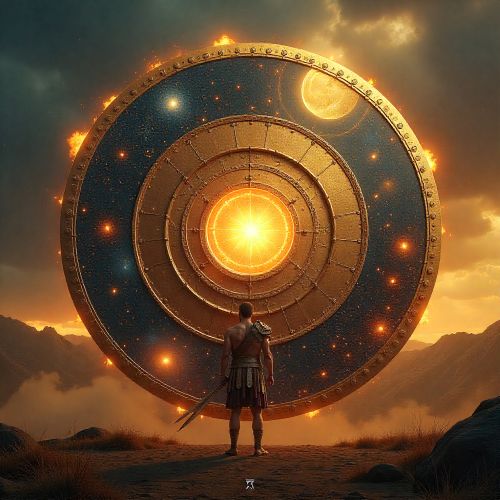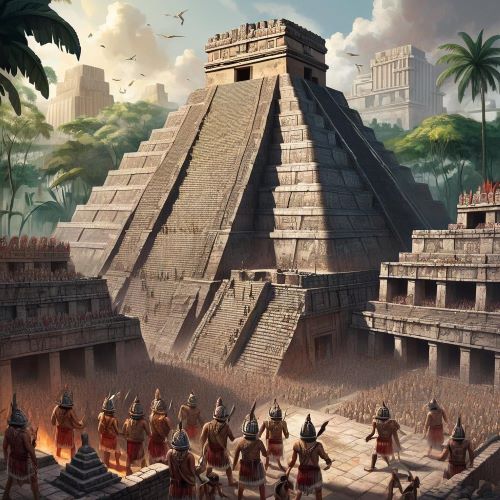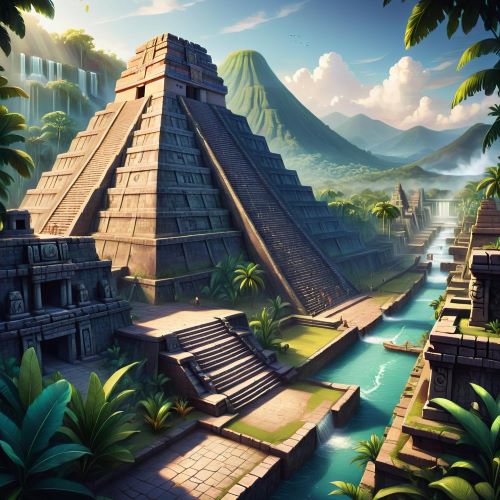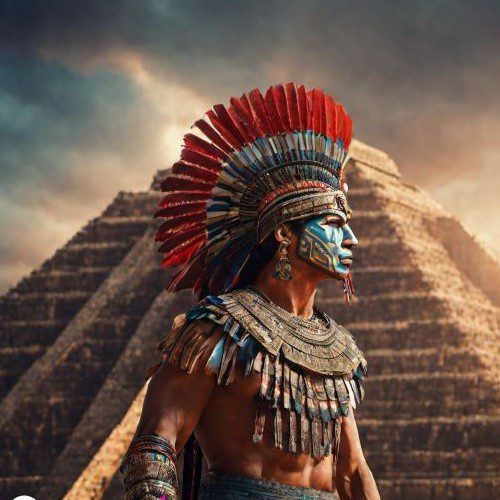
Aztec Zodiac : The 20 Day Signs of Ancient Mexico
The Aztec Zodiac is one of the most fascinating aspects of Mesoamerican cosmology, offering a glimpse into how the Aztecs understood time, destiny, and human personality. Unlike the Western zodiac, which is based on the position of stars and planets, the Aztec Zodiac emerged from a complex calendar system that intertwined mythology, religion, and mathematics. By studying it, we gain insights into how the Aztecs connected human life with the larger cycles of the universe.
Origins of the Aztec Zodiac
The foundation of the Aztec Zodiac lies in the Tonalpohualli, the sacred 260-day calendar used by the Aztecs and other Mesoamerican cultures. This calendar combined 20 day signs with numbers from one to thirteen, producing unique cycles of time. Each day had its own ruling deity, symbolic meaning, and influence on the individual born under it.
While the Western zodiac has twelve signs corresponding to months, the Aztec Zodiac featured 20 day signs, each associated with specific traits, strengths, and challenges. These signs played a vital role in divination, guiding decisions about births, marriages, agriculture, and even warfare.
The 20 Day Signs of the Aztec Zodiac
The Aztec Zodiac signs were deeply symbolic and connected to natural forces, animals, and deities. Each sign carried meanings that shaped a person’s character and destiny:
-
Cipactli (Crocodile) – Symbol of beginnings, creativity, and leadership.
-
Ehecatl (Wind) – Represents movement, communication, and adaptability.
-
Calli (House) – Associated with stability, family, and protection.
-
Cuetzpalin (Lizard) – A sign of vitality, agility, and renewal.
-
Coatl (Serpent) – Embodies transformation, duality, and wisdom.
-
Miquiztli (Death) – Not an ominous sign, but one of transition and rebirth.
-
Mazatl (Deer) – Symbol of grace, instinct, and sensitivity.
-
Tochtli (Rabbit) – Connected to fertility, abundance, and celebration.
-
Atl (Water) – Represents purification, flexibility, and adaptability.
-
Itzcuintli (Dog) – Sign of loyalty, guidance, and protection.
-
Ozomahtli (Monkey) – Playful, creative, and mischievous energy.
-
Malinalli (Grass) – Symbol of resilience, sacrifice, and humility.
-
Acatl (Reed) – Represents order, justice, and uprightness.
-
Ocelotl (Jaguar) – Embodies strength, courage, and spiritual power.
-
Cuauhtli (Eagle) – Visionary, ambitious, and associated with the sun.
-
Cozcacuauhtli (Vulture) – A sign of renewal, cleansing, and endurance.
-
Ollin (Movement) – Symbol of change, earthquakes, and destiny.
-
Tecpatl (Flint Knife) – Represents sacrifice, truth, and sharp intelligence.
-
Quiahuitl (Rain) – Associated with fertility, blessings, and growth.
-
Xochitl (Flower) – A sign of beauty, art, and spiritual enlightenment.
Each day sign was not just symbolic but also linked with specific deities who influenced a person’s path. For example, the Eagle was associated with Huitzilopochtli, the sun god and patron of the Aztecs, giving people born under this sign warrior-like qualities.
Personality and Destiny in the Aztec Zodiac
The Aztec Zodiac was not merely about character traits but also about fate. Priests known as tonalpouhque interpreted birth signs to determine an individual’s life path, strengths, and challenges. Someone born under Rabbit, for instance, might be destined for abundance but could also struggle with excess or indulgence. Those born under Jaguar were thought to have powerful spiritual energy but faced challenges of balancing strength with humility.
Unlike the Western zodiac, where each sign rules about a month, the Aztec Zodiac cycled daily, meaning people could share the same sign even if born days apart. To refine predictions, the Aztecs combined the day sign with a number (1 to 13), creating a far more complex reading of personality and destiny.
The Spiritual Role of the Aztec Zodiac
The Aztec Zodiac was not limited to personal guidance; it was a cornerstone of religious practice. Ceremonies, offerings, and even royal coronations were timed according to favorable signs. Farmers relied on zodiac signs to determine the best times to plant crops. Warriors and rulers consulted priests to choose auspicious days for battle or political decisions.
The Zodiac connected human life with cosmic order, ensuring that actions were in harmony with the gods and the cycles of the universe.
The Aztec Zodiac in Modern Times
Today, the Aztec Zodiac has resurfaced as a source of spiritual inspiration and cultural pride. People explore their day signs to understand personality traits, much like Western astrology. Artists and writers incorporate the symbols of the Aztec Zodiac into modern designs, tattoos, and storytelling.
Moreover, scholars study the Zodiac to better understand Aztec philosophy, which emphasized balance, duality, and respect for cosmic order. By revisiting this ancient system, modern enthusiasts connect with the wisdom of a civilization that saw humanity as part of a larger, divine cycle.
Conclusion
The Aztec Zodiac is more than an ancient calendar—it is a window into the Aztec worldview, where destiny, personality, and spirituality were deeply interconnected. Its 20 day signs reveal a universe where animals, elements, and deities shaped human lives, guiding people toward balance and harmony.
Whether approached as a cultural study or a spiritual practice, the Aztec Zodiac continues to fascinate and inspire, reminding us of the profound ways in which ancient civilizations sought to understand their place in the cosmos.
No posts were found.









